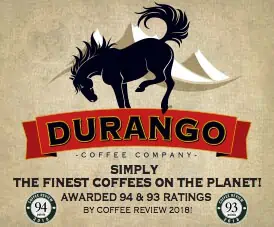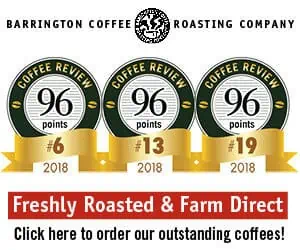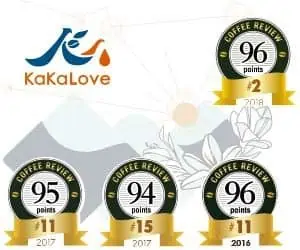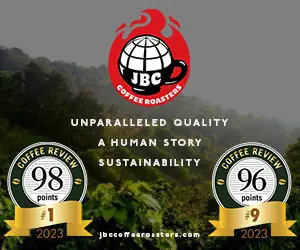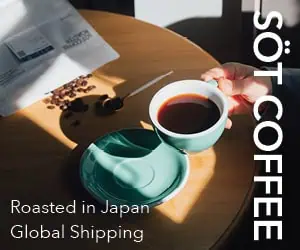For those who just walked into the coffee movie, most of the coffee grown commercially in the world comes from trees of two species: arabica and robusta. Coffea arabica is the original commercial species of coffee, the one that Kaldi’s tiresomely celebrated goats ate, the species that first sold human beings on the pleasures of the cup. Robusta, the popular name for Coffea canephora, is a lower-growing, higher bearing, more disease-resistant species first grown commercially in the early 20th century.
All sorts of factors influence how green coffees taste, but if you were served a robusta and an arabica that were perfectly and uniformly handled from tree to cup, you would find that the robusta tastes heavier, more neutral, less like “coffee” and more like roasted grain, vaguely sweet and nutty. The arabica would taste brighter and drier (i.e. more acidy), with a livelier sweetness, and more complex aromatics. Robustas on an average contain considerably more caffeine than arabicas, about 30% to 40% more.
Until the 20th century virtually all coffee consumed in the world was arabica. But by the mid-twentieth century robustas had established themselves in two important ways in the world of coffee. The first was as a cost-saving component in cheap grocery store (later supermarket) blends. The second was as a component of better quality blends in Europe.
Plot and Subplot
There is a robusta plot and a robusta subplot in the coffee movie currently showing in the U.S. The main plot: robustas continue to eviscerate the low-end American cup, while destroying the livelihood of many of the world’s artisan coffee growers. The paradoxical subplot: some quality-oriented American roasters are discovering what European roasters have known for the last 40 years or so: Used judiciously, robustas can smooth, round, and give sweetness and weight to blends of all kinds, but particularly to espresso blends.
First the main plot: Apparently with the support of the World Bank, robustas recently have been planted in very large quantities in Vietnam. These are mass-produced coffees at their most dramatic: stripped from the trees, leaves, unripe, ripe and overripe fruit and all, and dried in deep piles. All of which means the essentially bland, grainy robusta character is topped off with an assortment of off-tastes, mainly musty/mildewed and fermented. These coffees sell for considerably less than all other coffees, including better quality robustas. I am told that production costs for Vietnamese robustas are about 20 cents per pound or less, compared to, for example, production costs of 80 to 90 cents per pound for the excellent “100% Colombia” coffees competing in the supermarket.
And now the current episode: Commercial dealers and roasters have learned to steam the often foul-tasting Vietnamese robustas, removing the waxy covering of the bean and muting (but not entirely eliminating) the offensive flavor notes.

